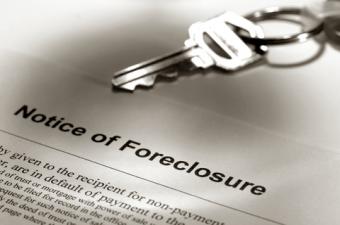Despite threats from the federal budget sequester, the nation's economy expanded ""at a moderate pace"" from late February to early April, the Federal Reserve reported Wednesday in its periodic ""Beige Book. Activity in five Federal Reserve Districts--Cleveland, Richmond, St. Louis, Minneapolis, and Kansas City--was described as growing at a moderate pace, while in five other districts-- Boston, Philadelphia, Atlanta, Chicago, and San Francisco--growth was notched slightly slower as ""modest.""
Read More »Multifamily Boosts Housing Starts in March
Led by a surge in multifamily building, housing starts jumped 7.0 percent in March to a seasonally adjusted annual rate of 1,036,000, the highest level since June 2008 while housing starts dropped 3.9 percent to 902,000, the lowest level since November, the Census Bureau and HUD reported jointly Tuesday. In February, multifamily activity represented 60 percent of the increase in permits, while in March, all of the multifamily units accounted for all of the increase in starts as single-family starts fell.
Read More »Rhode Island Supreme Court Supports MERS’ Role as Mortgagee
A Rhode Island Supreme Court ruling determined Mortgage Electronic Registration Systems, Inc. (MERS), as mortgagee, had the authority to proceed with a foreclosure on behalf of another entity, MERS announced in a release.
Read More »Report: Commercial Real Estate Prices Increase in February
According to data from Moody's Analytics and RCA, Commercial real estate (CRE) prices ticked up slightly in February. The Commercial Property Price Indices (CPPI) national all-property composite index increased 0.5 percent in February from the January price level, Moody&'s revealed in a release. The index's two components--apartment and core commercial--increased by 1.3 percent and 0.2 percent, respectively, for the month.
Read More »Rise in Prices, Use of Short Sales Lead to Declining Loss Severities
Rising home prices and higher levels of short sales are leading to declining loss severities in the residential mortgage-backed securities (RMBS) market, according to Fitch Ratings. The agency's quarterly report noted its Loss Severity Index declined from 67.5 percent in the first quarter of 2012 to 64.2 percent in the first quarter of this year. Loss severities on short sales tend to be 10 to 15 percent lower than loss severities on REOs, according to Fitch. Also, short sales are generally resolved about 12 months sooner than REOs, the agency stated.
Read More »Experts Project Growth in Commercial Real Estate, Housing Starts
A recent industry survey detects rising optimism in the commercial real estate sector and the single-family housing sector over the next few years. The survey, conducted in March by the Urban Land Institute and Ernst & Young, finds a consensus among economists and analysts that the real estate market will improve as transaction volumes rise and vacancies decline. Commercial real estate transactions totaled about $290 billion last year and are expected to rise to $310 billion this year. By 2015, analysts expect volumes of about $360 billion. The single-family market is anticipated to experience a rise in housing starts and a deceleration in price increases.
Read More »FHFA Extends HARP for Another Two Years
The Federal Housing Finance Agency (FHFA) granted the Home Affordable Refinance Program (HARP) a two-year extension, the agency announced Thursday. Under the direction of FHFA, Fannie Mae and Freddie Mac's regulator, the program will live on until December 31, 2015. ""More than 2 million homeowners have refinanced through HARP, proving it a useful tool for reducing risk,"" said FHFA Acting Director Edward J. DeMarco. ""We are extending the program so more underwater borrowers can benefit from lower interest rate.""
Read More »Rhode Island Judge Dismisses Complaint Against MERS
A judge in Rhode Island ruled in favor of Mortgage Electronic Registration Systems, Inc. (MERS) and co-defendants and dismissed arguments of wrongful foreclosure from the plaintiff.
Read More »Montana Court Rejects Wrongful Foreclosure Complaint
A Montana court rejected claims from plaintiffs of wrongful foreclosure and ruled in favor of Mortgage Electronic Registration Systems, Inc. (MERS) and other defendants.
Read More »FHFA: 47% of HARP Refis in January Were for Underwater Borrowers
In January, Fannie Mae and Freddie Mac refinanced about 97,600 loans through the Home Affordable Refinance Program (HARP), of which nearly half represented underwater borrowers, the Federal Housing Finance Agency (FHFA) reported Tuesday. The agency's report revealed 47 percent of loans refinanced through HARP in January had loan-to-value (LTV) ratios greater than 105 percent. In addition, a quarter of the borrowers were deeply underwater, with 25 percent of loans refinanced through HARP having LTVs greater than 125 percent.
Read More »
 DSNews The homepage of the servicing industry
DSNews The homepage of the servicing industry









